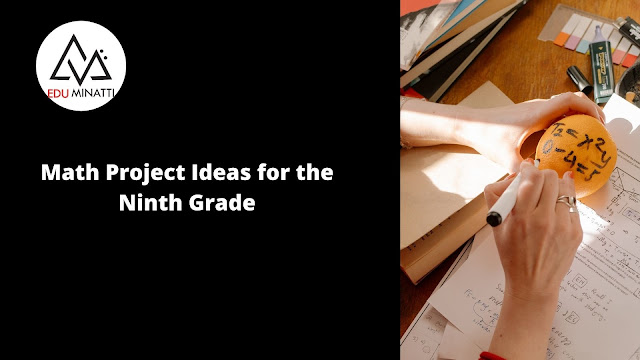Math Project Ideas for the Ninth Grade
Ninth grade maths class introduces abstract ideas into the classroom. Quadratic formula, linear equations and more advanced geometry ideas are common examples, and many students raise, "When will we ever need to use this?!"
Ninth grade maths projects will make math interesting, whereas conjointly showing the real-world value of certain ideas. To increase students’ interest in mathematics, schools in Dehradun include project based learning in their curriculum. For students who are troubled to get excited regarding maths, projects like these will build the subject exciting and relevant.
Probability
Probability is often abstract for students; therefore, a project-based model for teaching how it works within the real world will facilitate solidifying the ideas. Create a scenario where your students are operating for a mall that's adding stores geared toward teens, and have them work as "consultants" for one in all the stores.
Once the scenario is established, the scholars can interview the school to find out what trends and designs would sell best in their stores, then use their maths skills and therefore the data gathered to see the probability of any given group of students, corresponding to girls of a certain age vary, carrying a specific style. The knowledge will then be given to the class, mirroring how an actual consultant would use technology and knowledge to seek out an answer for a client.
Students find these approaches fascinating, consequently the majority of boarding school in India follow these techniques to make maths fun and easy for students. It also allows students to demonstrate their skills while working independently as well as in a team.
Bridge Building
Building bridges incorporate geometry, algebra and physics during a real-world application. Students will add teams to build bridges out of a spread of class-friendly materials, like manila folders or flexible sticks. Lecturers will even consider creating a bridge-building competition out of the assignment.
Teachers give instruction on solid bridge-building shapes and techniques; then students work along to create a bridge that's each lightweight and durable. Through trial and error, they're going to learn for themselves regarding what geometric shapes work best for trusses and supports.
Candy Hunt
Once students know the slope-intercept kind of a linear equation, they'll use candy to write down and solve systems in a hands-on way. Students are given paper, candy and a ruler and divided into teams of two. One group can opt for a point on the graph to be the spot wherever the candy is "hidden." Using that coordinate value, the scholars can write five separate equations. Three of them can have solutions that make a small space around the hidden candy's point. The other two can have a solution that shows the precise location of the candy.
Once every group has their equations written, they exchange equations with another group. The groups then solve every other's equations, graphing them on paper. If done properly, they're going to be able to find the location of the hidden candy, at that purpose they get to eat the opposite group's candy. If a group doesn't successfully notice the location, the group that wrote the equations gets to stay the candy. If the group that wrote the equations created an error in writing the equations, then they have to surrender their candy.
Ninth grade maths projects that are active create excitement within the classroom. These projects get school out of the textbooks and interacting with numbers in an additional tangible way. Students who commonly don't take care of mathematics might notice themselves excited about the topic. Projects like these work well alongside traditional maths instruction to create an engaging, exciting maths class.




Comments
Post a Comment